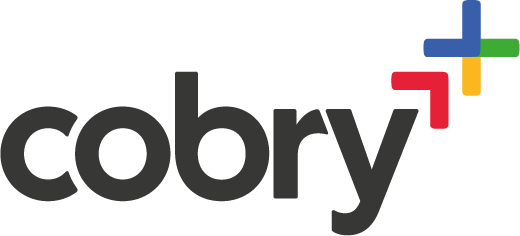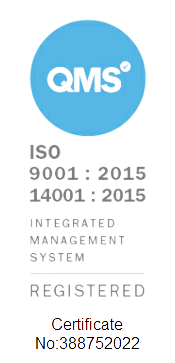“We need better data governance.”
Makes you tremble a little, doesn’t it? A little scared. A little bit of dread. Makes you think about what the next initiative, policy, or software your colleague or manager is about to bring up when they say this exact sequence of words.
Are we now moving all of our work to a new platform? Are we migrating to a new and shiny tech stack that - of course - solves ALL of our problems? The technology that leads us on a magical journey to a place where quality data grows on trees, rivers flow bountifully with brilliant insights and where everyone is allowed to frolic in the fields of fantastic returns on our investment?
Unfortunately, this is unlikely. The reality is that 90% of data governance projects fail.
Data governance is a deeply outdated term in the world of well-run businesses, despite its relatively recent inception (the datasphere can be a capricious place). In “Disrupting Data Governance”, Laura B Madsen compares data to water. Trying to ‘govern data’ is equivalent to stopping a tsunami with a short wooden fence and your fingers crossed ? - there’s simply too much data coming in for any one person or team to handle. Instead of stopping the tsunami, which is what most ‘data governance’ initiatives try to do, why not expand the landmass it’s about to hit, and let it fizzle into smaller, more controllable streams - in other words, empower a greater number of staff to be able to get insights from this data.
Too many data governance initiatives focus on controlling the data rather than using the data - meaning that leaders are caught up in security policies, rules, and constricting access; whereas they should be looking into making their data accessible and useful.
Madsen explains that end-users must be allowed and able to get in there and roll up their sleeves. And with the right technology and the right culture, well-run businesses do just that.
It all started with good intentions.
Data governance wasn’t even the first coined term describing the process of controlling information flow within organisations - the first was data stewardship. The idea was that you’d have a data steward (or a team of them) that would ensure that the data being used by your analysts was clean, shiny, pristine, and ready for analysis. The steward's role was to be technical enough to tidy the swamps of data being created and decipher business goals into queryable questions. Stewards were the middle people between the worlds of dirty, techy IT and shiny business outcomes.
“Oh, yes, jolly good - look at that! The data is quite not up to scratch, I am afraid. We will have to hire more stewards to clean up this mess!”
Data stewardship was a term that was first used in the 1990s when data quantities were manageable by a team of well-intentioned stewards.
Then it all went downhill.
Later, the industry decided that ‘stewardship’ wasn't the thing to do anymore. Maybe the stewards were getting tired of the parabolic amount of data being created year on year? Who knows. In any case, “Data Governance” was now the thing to talk about.
(Thanks, Google Ngrams and Prukalpa!)
And oh boy, do people talk about it.
GDPR, security breaches, leaks, lawsuits, ransomware, corporate espionage, rogue employees, shadow IT - these are all reasons why you must have data governance.
Data governance became a scary word. Many leaders we talk to when working to build a data culture recoil when we talk about governance because of their past experience with terrible technologies, expensive consultants, and the entire roster of aforementioned issues. Some executives knock the idea back, saying, “That's compliance/ internal audit's job, not mine”.
Leaders fail to look back on what data governance initially meant. Coming back to roots, governance (or stewardship) was all about communication. It was all about building a culture in which people, processes, technology and data work in harmony to achieve business goals.
Back to fundamentals.
Many thought leaders in this space have asked, "Do we rebrand data governance?”, and attempted to come up with answers.
Nicola Askham said, “For a while, I toyed with the idea of starting a campaign to rename it, but I didn't think it was worth adding to the confusion surrounding the term by coming up with another title.”
“Governance is just a horrible word,” said Chris Bannocks, group chief data officer at ING Bank N.V. “People have really negative connotations associated with it.”
Dan Sutherland proposed changing it to “Data Enablement”.
Matthew Roche from the Power BI advisory team suggests keeping it as is but limiting our usage of the word.
At Cobry, we still call it governance, despite knowing it’s not a great word due to the connotations.
Ultimately, it doesn’t matter. We just have to revert to fundamentals. The more people understand that we’re all about “building a framework for a culture that seamlessly works with technology to drive impact using data”, it won’t matter what we call it.
We’re not going to end this piece here, though. Continue reading to discover how you can embrace data governance to give you a competitive edge.
Organisations are continuing to be blind to the value of data
If you’re reading this and see the importance of building a data culture, you’re ahead of the curve. The 2019 NVP report highlights some harrowing statistics:
- 72% of survey participants report that they have yet to forge a data culture
- 69% report that they have not created a data-driven organisation
- 53% state that they are not yet treating data as a business asset
- 52% admit that they are not competing on data and analytics.
The sooner you forge a data culture, the sooner you unlock the keys to deep insights and parabolic growth.
So what can you do?
With Cobry, you can take fundamental steps to grab the problem by the horns and wrangle it into submission.
Your technology
We believe that technology can drive cultures and the way people behave, both explicitly and implicitly. Companies we’ve moved from Microsoft 365 to Google Workspace have found a resurgence in productivity, collaboration and intracommunication. Likewise, if you give your organisation best-in-class tools to discover, explore, and consume data, you’ll have a much larger chance of adoption, and thus, success.
Pick your tech wisely. We like BigQuery and Looker because these technologies were architected from the ground up to enable end-users to dive directly into data problems as seamlessly as possible. These technologies encourage users to become their own data stewards.
Your people and culture
When you receive CVs, you may find that folks often place “Microsoft Word, Microsoft Excel” in their skills subsection. It’s 2022. It should be a given that people know how to use a word processor and spreadsheets.
Just like it’s implied that your employees know how to use a word processor, you should strive to build a culture that understands the basics of how to use data to make decisions.
This doesn’t mean that your customer success team have bodacious SQL abilities or your HR folks know how to run an aggregation formula. It’s about ensuring that your employees are skilled enough to:
- Identify what problems can be solved using the data you have.
- Know how to access the data they need to solve these problems.
- Know who can help solve problems in cases when they cannot do it themselves (this should be as infrequent as practically possible).
Data skills will have to be commonplace in your organisation. This may seem like a big ask, but if you frame these big scary ‘data governance’ initiatives as a way for your employees to work better, smarter, and more efficiently - it’s more achievable than you probably think.
If you’ve read this far, why not discuss this over a coffee with us, and we can help your organisation be more effective through ‘data governance’ or ‘data enablement’. Drop your email below, and we’ll make sure to get in touch.







